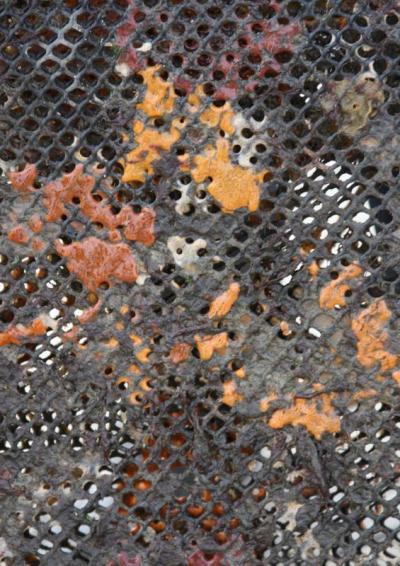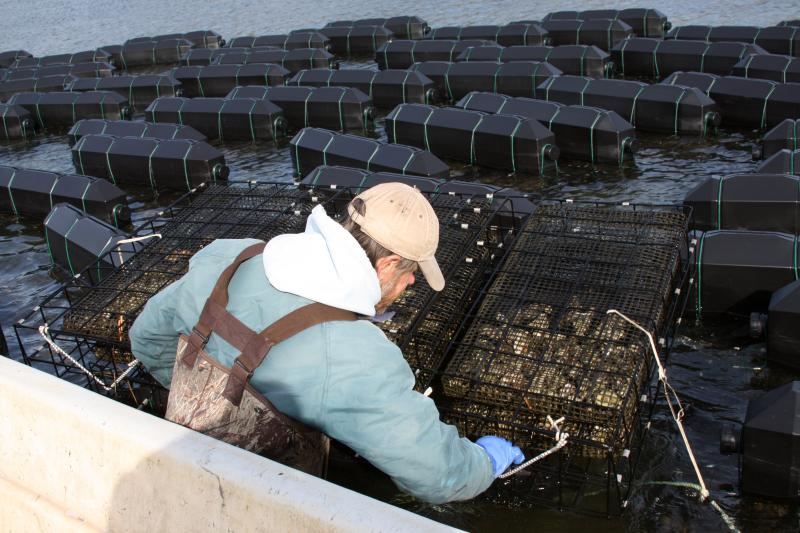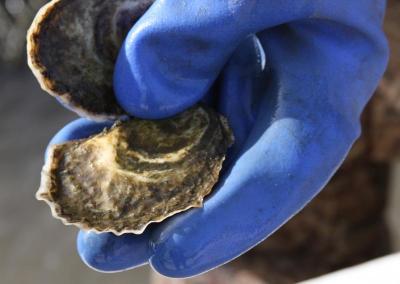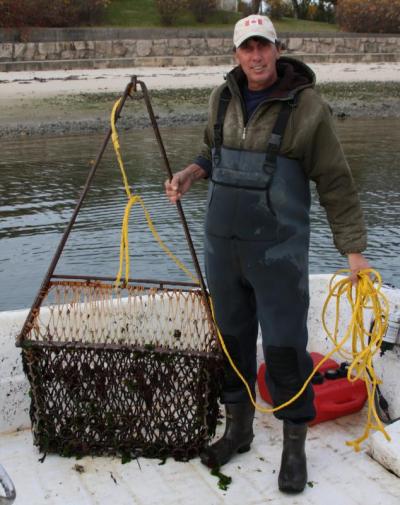Wareham oyster farming: From the sea to your plate



You've probably eaten a few oysters on the half-shell, but have you ever wondered how shellfish get from the sea to your plate?
The Town of Wareham has seven aquaculture farms, on which growers harvest shellfish to sell to distributors, said Harbormaster Garry Buckminster. Growers lease these “shellfish grants” from the town for ten-year periods.
Charlie Maxim, who has a shellfish grant on Long Beach, has been harvesting shellfish for nearly his whole life. He knows much about the history of the area's shellfishing industry.
“When they first came out with shellfish grants in the 1800s, this was a non-productive area,” Maxim explained. “You'd turn around and make it productive.”
Maxim's father got one of the shellfish grants in 1948. Around that time, scallops were all over Long Beach.
“People would get 75-bushels a day because scallops were so plentiful,” Maxim said. “The bottom was nothing but scallops.”
There were even shucking houses across town, where fishermen could drop off their shellfish and workers would opened them and extract the meat.
Today, because of their relatively quick rate of return, many growers are harvesting oysters.
“Right now, we're selling oysters that we bought last year,” said Ben Suddard, of B&B Shellfish. In comparison, “if I can get a quahog out in three years, I'm doing well."
Growing is “a very labor-intensive operation,” explained Suddard, who has shellfish grants in Bourne Cove and Little Harbor.
Shellfish in this part of the country only grow in the warmer months, from early April until mid-November. When the water temperature drops below 40 degrees, the shellfish become dormant.
Growers purchase seeds, which are about the size of a grain of sand, from hatcheries. The growers nurture the seeds until they grow to be market-sized, which is three-inches long.
The seeds are arrayed in fiberglass boxes which are placed underneath a floating dock. Screens on the bottom of the boxes draw water in, allowing the oysters to eat and grow. When oysters grow up to about a half-inch in size, they're moved into mesh bags and floated at sea.
“We don't have to feed them,” Suddard said. “Mother Nature does that for us.”
Like all animals, some oysters grow faster than others. Growers sift through their oysters regularly, keeping like-sized shellfish together. The bigger oysters steal food from the smaller ones, explained Dennis Pittsley, of Onset Oyster Corp.
“You'll have a lot of runts if you don't size them,” Pittsley noted.
In addition to constantly monitoring the oysters, growers must clean the build-up of sea sponge and other undesirable sea-life from the bags of shellfish, so that the growing process is not affected.
“Basically, what we do is move things,” said Pittsley. “Clean and move. That's what oyster farming is.”
Though it may sound simple, growers have many challenges. They have to watch out for diseases that affect their growing crop, as well as storm surges and astronomical high and low tides, which can cause shellfish to be exposed to cold weather, killing them. Additionally, smaller oysters sometimes become food for crabs.
“When you take all of those factors into consideration, you're going to lose oysters,” said Suddard, who lost $15,000 to $20,000 worth of crop last summer. “You try to purchase enough at the beginning so you have enough left to make a dollar.”
But despite the challenges, “it has days where it's just sublime being down here, and you can't think of anything that would be better to do with your life,” Suddard said while looking out at his Bourne Cove operation. “The thing I love about it most is it's never the same two days in a row."


















